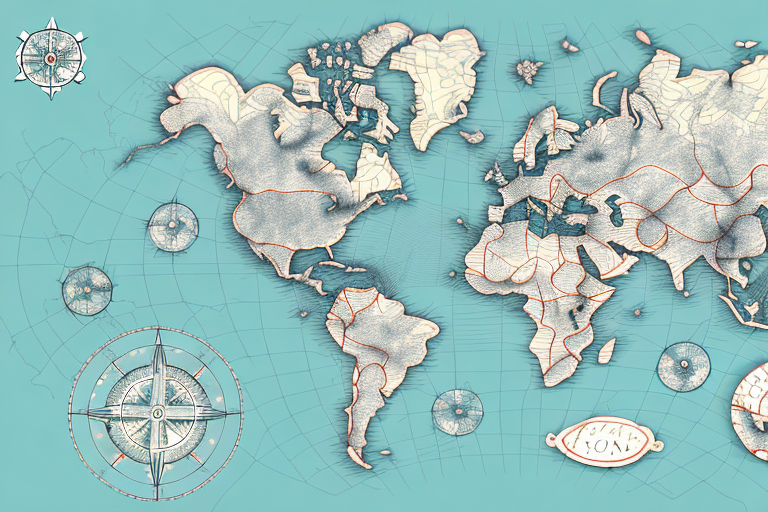.svg)
Geotargeting and Geofencing: Localized Marketing Precision
.svg)

Geotargeting and Geofencing: Localized Marketing Precision
Geotargeting and geofencing are powerful tools that enable businesses to deliver localized marketing messages with precision. By understanding and implementing these strategies, businesses can increase relevance, engagement, and conversion rates, ultimately enhancing return on investment (ROI) and cost-effectiveness.
Understanding Geotargeting and Geofencing
What is Geotargeting?
Geotargeting is a marketing technique that uses geographic data to deliver personalized messages to specific audiences. It involves segmenting customers based on their location and tailoring marketing campaigns accordingly. With geotargeting, businesses can target customers in specific cities, regions, or even within a certain radius of their physical stores or service areas. This allows for hyper-personalization and precise targeting of relevant messages.
For example, imagine you own a chain of coffee shops. With geotargeting, you can identify customers who live or work near your stores and send them targeted promotions or discounts. By understanding their location, you can offer them incentives to visit your nearest branch, such as a free coffee or a special deal on their favorite beverage. This level of personalization not only increases the chances of attracting customers but also enhances their overall experience with your brand.
What is Geofencing?
Geofencing takes geotargeting to the next level by creating virtual boundaries or "fences" around specific locations. These boundaries are defined based on geographical coordinates or addresses and can be as small as a store or as large as an entire city. When a customer enters or exits the defined area, they can be automatically targeted with marketing messages or offers. Geofencing provides businesses with real-time targeting capabilities, enabling them to engage with potential customers at the right place and time.
Let's continue with the coffee shop example. With geofencing, you can set up virtual fences around your competitor's locations. Whenever a customer enters or exits one of these competitor locations, you can send them a notification offering a better deal or a unique experience at your coffee shop. By leveraging geofencing, you can strategically target customers who are already interested in similar products or services, providing them with a compelling reason to choose your brand over the competition.
The Importance of Localized Marketing Precision
Localized marketing precision is crucial in today's competitive business landscape. Customers expect relevant and personalized experiences, and geotargeting and geofencing allow businesses to meet these expectations. By delivering messages that resonate with customers based on their location, businesses can increase their chances of capturing attention, driving engagement, and ultimately converting leads into customers.
Moreover, localized marketing precision helps businesses establish a stronger brand presence within specific markets, building trust and loyalty among local customers. By tailoring marketing campaigns to specific regions or cities, businesses can showcase their understanding of local preferences, culture, and needs. This localized approach creates a sense of connection and relevance, making customers more likely to choose a brand that understands and caters to their unique requirements.
Imagine you are a fashion retailer with stores in different cities. By utilizing geotargeting and geofencing, you can promote different clothing styles and trends based on the preferences of each location. For example, if you have a store in a coastal city, you can focus on promoting swimwear and beachwear during the summer months. On the other hand, if you have a store in a colder climate, you can highlight winter clothing and accessories. This level of localized marketing precision not only increases the effectiveness of your campaigns but also strengthens your brand's reputation as a reliable and relevant choice for customers in each specific area.
In conclusion, geotargeting and geofencing are powerful marketing techniques that enable businesses to deliver personalized messages and offers to specific audiences based on their location. By utilizing these strategies, businesses can enhance customer experiences, increase engagement, and establish a stronger brand presence within target markets. As technology continues to advance, geotargeting and geofencing will likely become even more sophisticated, providing businesses with new opportunities to connect with customers in meaningful and impactful ways.
Benefits of Geotargeting and Geofencing
Geotargeting and geofencing are powerful marketing strategies that have revolutionized the way businesses connect with their target audiences. These techniques enable businesses to deliver highly relevant and personalized messages to their customers, fostering a deeper connection and enhancing the overall customer experience.
Increased Relevance and Personalization
One of the key advantages of geotargeting and geofencing is the ability to understand customers' locations and tailor marketing content accordingly. By doing so, businesses can create promotions, offers, and messages that resonate with local preferences, needs, and even cultural nuances. For example, a clothing retailer can showcase winter clothing to customers in colder regions, while offering lightweight and breathable options to those in warmer climates. This level of relevance and personalization not only catches customers' attention but also makes them feel understood and valued.
Additionally, geotargeting and geofencing enable businesses to provide location-specific information and recommendations. For instance, a restaurant can send personalized recommendations for nearby attractions or events to customers who are visiting a particular area. This not only enhances the customer experience but also increases the likelihood of customers engaging with the brand and making a purchase.
Improved Customer Engagement and Conversion Rates
When customers receive messages that are tailored to their location and immediate surroundings, they are more likely to engage with the content and take the desired actions. Geotargeting and geofencing allow businesses to reach customers at the right time and place, maximizing the chances of capturing their attention and motivating them to make a purchase or engage with the brand further.
For example, a retail store can send targeted notifications to customers who are in close proximity, informing them about ongoing sales or limited-time offers. These timely and relevant messages serve as gentle reminders and encourage customers to visit the store and make a purchase. Similarly, a mobile app can use geofencing to send personalized push notifications to users who are near a specific location, enticing them to explore nearby deals or discounts. This increased engagement ultimately leads to higher conversion rates and improved business outcomes.
Enhanced ROI and Cost-effectiveness
Geotargeting and geofencing strategies offer businesses the opportunity to optimize their marketing spend and achieve a higher return on investment (ROI). By delivering messages only to customers within specific target locations, businesses can focus their resources on reaching those most likely to convert, reducing wasted advertising spend.
Furthermore, the ability to deliver timely and relevant messages increases the effectiveness of marketing efforts. Instead of relying on mass marketing campaigns that may not resonate with all customers, geotargeting and geofencing allow businesses to tailor their messages to specific locations and demographics. This targeted approach ensures that marketing efforts are more cost-effective and yield better results.
Moreover, geotargeting and geofencing can help businesses identify new opportunities and untapped markets. By analyzing customer data and location patterns, businesses can gain valuable insights into emerging trends and consumer behavior. This information can then be used to refine marketing strategies, expand into new areas, and drive further growth.
In conclusion, geotargeting and geofencing are powerful tools that enable businesses to deliver highly relevant and personalized messages, improve customer engagement and conversion rates, and enhance overall campaign performance. By harnessing the power of location-based marketing, businesses can connect with their customers on a deeper level and achieve better business outcomes.
Implementing Geotargeting and Geofencing Strategies
Defining Target Locations and Boundaries
The first step in implementing geotargeting and geofencing strategies is to define the target locations and boundaries. This involves identifying the areas where the business wants to focus its marketing efforts, such as specific cities or regions. Additionally, businesses can define custom boundaries based on physical store locations or target demographics. Careful consideration should be given to these factors to ensure the accuracy and effectiveness of the geotargeting and geofencing campaigns.
Collecting and Analyzing Location Data
Collecting and analyzing location data is essential for successful geotargeting and geofencing. This data can be obtained through various sources, such as GPS data from mobile devices, IP addresses, or user-provided location information. By leveraging data analytics tools, businesses can gain insights into customer behavior, preferences, and patterns within specific geographical areas. These insights can then be used to refine marketing strategies and deliver more targeted and effective messages.
Creating Customized Marketing Campaigns
Once the target locations and location data have been defined, businesses can create customized marketing campaigns. The key to success is to align the messaging with the preferences and needs of the target audience within each location. This can involve incorporating localized language, culture-specific references, or highlighting location-specific offerings or events. By tailoring the content to resonate with the local audience, businesses can maximize the impact of their geotargeting and geofencing efforts.
Best Practices for Geotargeting and Geofencing
Segmenting Audiences based on Location
Segmenting the target audience based on location is a fundamental best practice for geotargeting and geofencing. Businesses should analyze their customer data to identify geographic trends and patterns. This segmentation allows for more personalized and relevant messaging, as different locations may have distinct preferences, behaviors, or needs. By understanding these differences and tailoring the marketing approach accordingly, businesses can achieve greater success in reaching and engaging with their target customers.
Delivering Timely and Relevant Messages
Timeliness and relevance are critical factors in geotargeting and geofencing success. Businesses should consider the context and timing of their marketing messages to maximize impact. For example, sending a promotional offer when a customer is near a physical store increases the likelihood of a visit. Additionally, considering external factors such as local events or weather conditions can help businesses deliver messages that are not only location-specific but also contextually relevant, further enhancing the effectiveness of the campaign.
Monitoring and Optimizing Campaign Performance
Continuous monitoring and optimization are essential for maximizing the results of geotargeting and geofencing campaigns. By tracking key performance indicators such as click-through rates, conversion rates, and engagement metrics, businesses can assess the effectiveness of their strategies and make data-driven adjustments as needed. Regular analysis and optimization ensure that the campaigns remain relevant, effective, and aligned with the evolving needs and preferences of the target audience.
In conclusion, geotargeting and geofencing provide businesses with the ability to deliver localized marketing messages with precision. By understanding the concepts, reaping the benefits, implementing effective strategies, and following best practices, businesses can achieve localized marketing precision and drive better business outcomes. Embracing geotargeting and geofencing as part of a comprehensive marketing strategy gives businesses a competitive edge in today's highly competitive and dynamic marketplace.
Related Posts
Let's
Let’s discuss how we can bring reinvigorated value and purpose to your brand.







.svg)